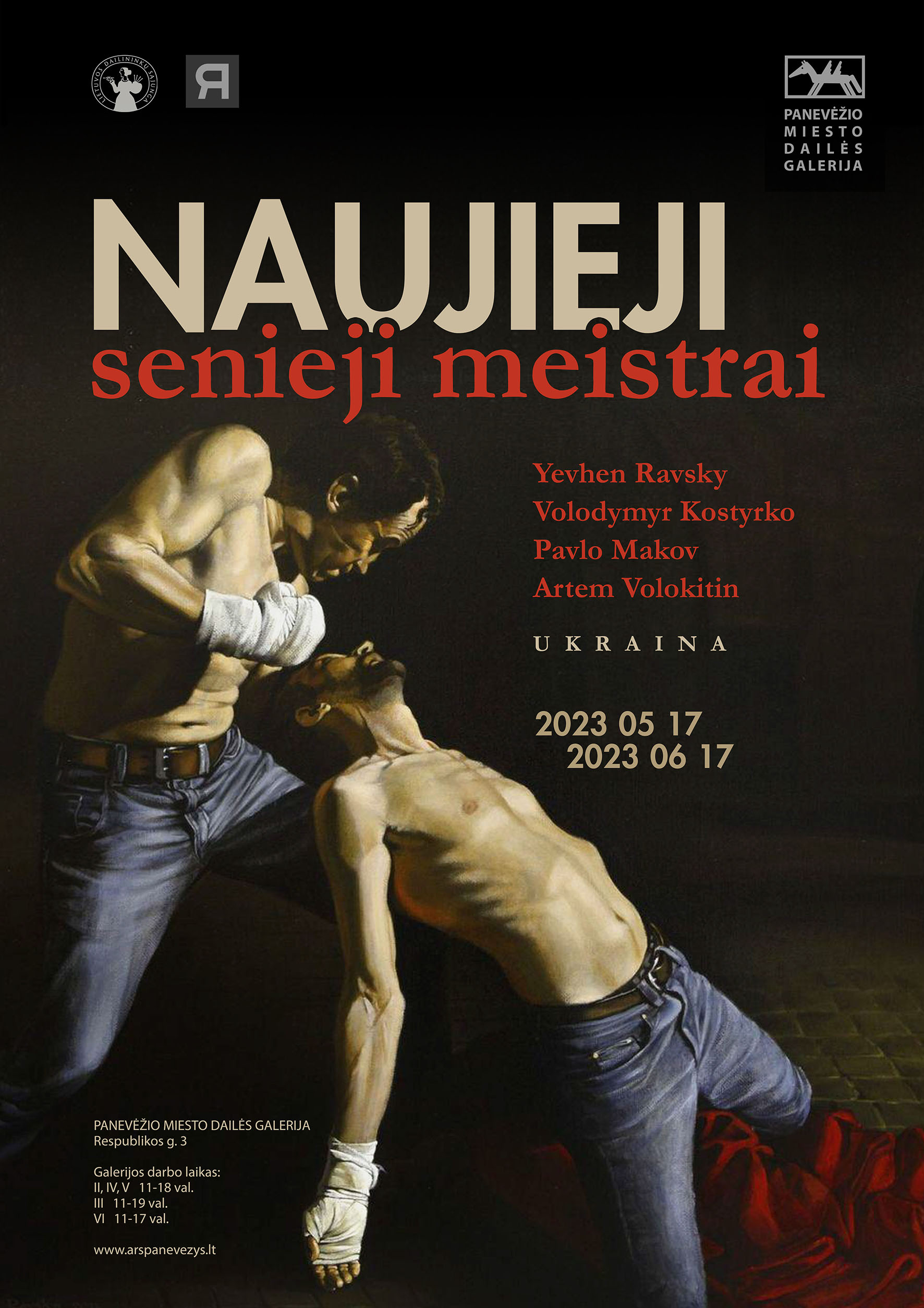May 17 – June 17, 2023
Exibited at the Art Gallery (Respublikos str. 3). 14A The exhibition is recommended for visitors aged 14 and over. We encourge parents and guardians to familiarize themselves with the exhibition as same of the content presented here may be considered inapproprite for children.
Artists: Yevhen Ravsky, Volodymyr Kostyrko, Pavlo Makov, Artem Volokitin
New old …
“Everything new is a well-forgotten old.”
“Everything flows, everything changes. You can’t enter the same river twice.”
We are well aware of these philosophical statements, we often quote them without thinking that they, in fact, contradict each other. It neither makes sense nor is it possible to determine which of them is “true” and which is not. We are doomed to struggle among wise quotations and to go at random among signposts that often point in opposite directions. The wisest in each generation try to build concepts and structures to bring at least some “clarity” and order to the cultural development of mankind, looking for laws of this development. Linearity has long been replaced by cyclicity; the created spiral development model also does not lead to universality, and schemes of several parallels or closed systems appear side by side. Unable to find laws. There are only patterns.
The history of art would have been scattered in the biographies of artists and individual works if not for Johann Winkelmann (1717-1768) and his theory of styles. We began to operate with epochs that successively replaced each other: antiquity, Byzantium, Romanesque style, Gothic, Renaissance, Baroque, Classicism… However, the sequence was relative, and already in the seventeenth century, classicism, instead of waiting for the end of Baroque, developed from it in parallel, and then appeared in each subsequent century, either with the prefix neo or pseudo. The same thing happened with the Baroque and Byzantine traditions.
The twentieth century radically changed art: first, it put an end in the form of a black square to all the figurativeness and objectivity of the image, and eventually, turned to installations and new media. Paints and brushes should have dried long ago, but they still paint both abstract and realistic works. Engraving is still carved, and sculpture is still sculpted. Of course, by those masters who know how to do it. Lucian Freud a few weeks ago was indifferent to Joseph Boyce or Ilya Kabakov…
There are fewer traditional painters and sculptors, but they have not disappeared. There are several reasons for their “immortality”. They are conservatives by nature. Technique, mastery of a work of art – these are the categories that are valued among these artists no less than the novelty and originality of the idea. The materiality of the artifact, the ability to preserve it, and therefore save the money invested in it – are not unimportant for collectors, the art market, and the authors themselves, who must somehow survive in this world. And those of them who, with the help of ancient technology, bring new ideas to their works, become relevant, well-known, and expensive.
Such masters in Ukraine have the basis of Soviet art education: the Republican Art School in Kyiv, art schools and institutes in Kyiv, Kharkiv, Lviv, and Odesa. Critical attitude to academic teaching methods has led the West to the fact that few graduates of art institutions there are able to draw the anatomically correct human figure. Academic art education in the USSR, with all its shortcomings in the conditions of socialist realism, trained the eye and stuffed the hand, taught to build a composition, and put lasers. Then the artists studied themselves: in museums, in books, on the Internet …
Pavlo Gudimov invited only those who use technical skills to create new provocative and sometimes paradoxical meanings for this exhibition.
Art critic Vita Susak, Lviv, 2011
*
For the first time, the phenomenon of New Old Masters was emphasized by the American art critic Donald Kuspit. In 2007, he wrote: “It is time to bring the Old Masters back from exile – from the grave – recognizing that they still teach us art and its meaning. It’s time to find a natural connection with traditional art […] because the art of the Old Masters is a real terra incognita, a deep mine, whose rich creative resources have long been closed to us.”
Kuspit’s research gave us the opportunity to look at artists in a new way and to systematize them in order to conditionally unite stylistically those who use a powerful set of techniques, genres, and plots of classical European art in their creative approaches and ways. However, the artists we classify as New Old Masters, in addition to skill, are primarily united by the relevance of the topics. Contemporary Art in the language of old masters is unexpected and contrasting. Neo-Caravaggist Yevhen Ravsky and mystic and conceptualist Volodymyr Kostyrko work in Lviv. Influential graphic artist and author of the installations Pavlo Makov and body painter Artem Volokitin represent Kharkiv.
In this project, we present the works of these four artists – representatives of the Ukrainian New Old Masters.
Curator Pavlo Gudimov, Art Center Ya Gallery

